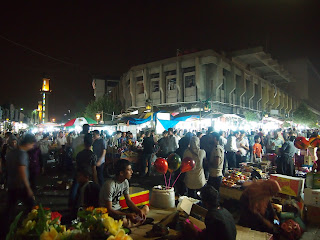Day Seven: Halabja Genocide Memorial, Iraq
Having met up with Nabaz and Omed the night before, they showed us typical Kurdish hospitality in offering to take us to our next place of interest - the town of Halabja, around 10km from the Iranian border with Iraq. The town became world famous in the 1980s as the site where Saddam Hussein and his partner in crime Chemical Ali launched a gas attack of unprecidented scale against a modern city. Nabaz and Omed had last visited the city around 15 years ago and neither of them had been to the memorial, so they were happy to drive us there and escort us around.
 |
| Swimming in a local river |
 |
| The Halabja Memorial |
 |
| A photo exhibit within the memorial |
 |
| Pre-Eid shopping in Sulimaniyah |






0 comments